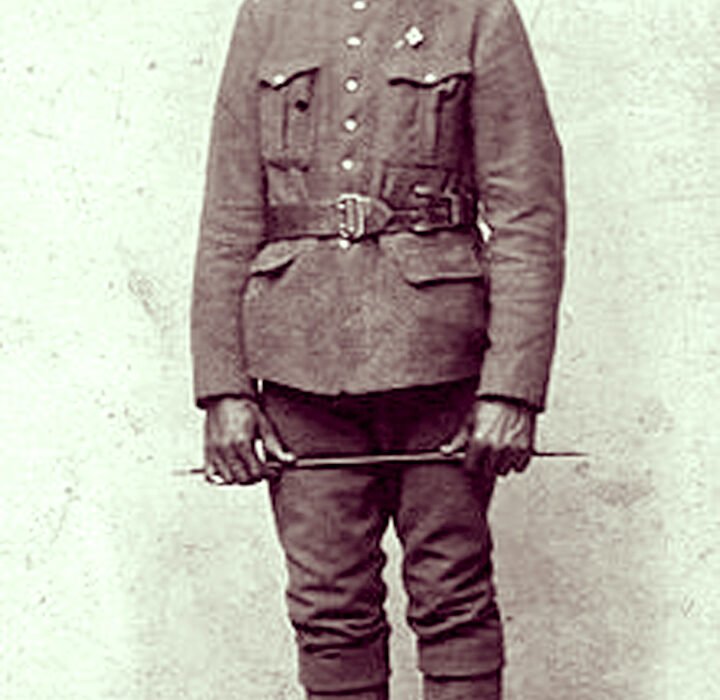Blacks fighting for King and country
by J. Leblanc
Many Black soldiers and sailors have fought and died on behalf of Canada in many military conflicts. Richard Pierpoint was one of them. He fought with Butler’s Rangers and later with The Colored Corp in the war of 1812.
In 1857, William Hall received the Victoria Cross, the British Empire’s highest award for Military Valor at the Siege of Lucknow. The Victoria Pioneer Rifle Corps, also known as The African Rifles, was the first officially authorized militia in western Canada.
The onset of World War 1 brought out a sense of patriotism and duty to serve both king and country. Black citizens, like their forefathers before them, were prepared to join the military and fight for their country in this “The War To End All Wars.” However, they soon found out that even if they were physically fit, and passed all the entry requirements, the doors to the recruiting centers from British Columbia to Nova Scotia were slammed shut in their face. Entry into the fighting units was at the discretion of the commanding officer and many outright refused to accept Blacks.
Lt.-Col. George W. Fowler, commanding officer of the 104th Battalion, requested permission to discharge 20 recruits because they were Black. He wrote, “I have been fortunate to have secured a very fine class of recruits and I do not think it fair that they should have to mingle with Negroes.”
There was correspondence as early as November 6, 1914, questioning why able bodied Black citizens who were ready to fight, were being rejected. On at least two occasions these same questions were brought up in the Canadian parliament.
On April 16, 1916, Major General W. Gwatkin issued the following memorandum:
1. Nothing is to be gained by blinking facts. The civilized Negro is vain and imitative; in Canada he is not being impelled to enlist by a high sense of duty; in the trenches, he is not likely to make a good fighter; and the average white man will not associate with him in terms of equality. Not a single commanding officer in Military District No. 2 is willing to accept a colored platoon as part of his battalion; and it would be humiliating to the colored men themselves to serve in a battalion where they were not wanted.
2. In France, in the firing line, there is no place for a Black battalion, C.E.F. It would be eyed askance; it would crowd-out a white battalion; and it would be difficult to reinforce.
3. Nor could it be left in England and used as a draft-giving depot; for there would be trouble if Negroes were sent to the front for the purpose of reinforcing white battalions…
Due to continued pressure from members of Canada’s Black community and their friends, the Canadian Military establishment begrudgingly authorized the formation of the No. 2 Construction Battalion on July 5th, 1916.
Approximately 600 men answered the call from all provinces, the United States and beyond, to join this newly formed segregated non-combat unit. They were led by 19 white officers under the command of Lieutenant Colonel Daniel H. Sutherland, the only Black officer in the armed forces; the Reverend William A. White, served as a chaplain for this unit.
After their basic training, Major-General Gwatkin sent the following memo, dated February 21, 1917, to The Naval Secretary. “We want to send overseas a labor Battalion composed of Negroes, with whom white troops object to travel. We should like to embark this battalion, by itself, in the Northland due to leave Halifax, N.S., on the 10th or 11th (next month).
Do you object to that vessel sailing without an escort? I suppose that she would be looked after as she approached home waters. The shipping Company concerned is prepared to take the risk.
The following reply was received two days later from the Naval Secretary.
“With reference to your memorandum of February 21st regarding the sailing of the “Northland,” I regret that the ship cannot possible proceed without an escort. Cannot she be hastened to sail with other troop ships from Halifax on the 9th of March”? Naval command clearly understood that if the “Northland” sailing alone, the men on board this ship would have been a sitting ducks for German U-boat torpedoes. The Northland finally sailed to Liverpool, England. The Battalion was then sent to a remote area of eastern France and was segregated from the other troops.
When they required medical treatment, they had to use the segregated wing of the hospital. As for their entertainment, a segregated Y.M.C.A was eventually built for them.
Major Bristol, the secretary to the Canadian Overseas Militia Minister, was mandated to write a report on ways to increase this unit’s strength. He wrote in his report: “these niggers do well in a Forestry Corps and labor units.”
There were Blacks who did manage to enlist with various fighting units of the Armed Forces. Private Jeremiah “Jerry” Jones, a Truro, Nova Scotia resident certainly distinguished himself in the line of fire.
Private Jones, a member of the Royal Canadian Regiment captured a German machine gun crew and forced them to carry their heavy machine gun back to his unit where he presented this machine gun to his commanding officer. It was said that he was then recommended for the Distinguished Conduct Metal.
However, Jones never received this medal and died in 1950. Only under pressure over many years was he, in 2010, posthumously awarded the Canadian Forces Distinguished Service Medal for his heroic actions at Vimy Ridge.
There were of course other minorities in Canada who face the same sort of treatment at the hands of their countrymen. One of these men was Japanese Canadian Masumi Mitsui. He was turned away from the recruitment centers in British Columbia and went to Alberta where he was finally able to enlist in the 10th Battalion. He rose to the rank of sergeant and was awarded the Military Medal for bravery.
When the war was over, some of these veterans returned to their hometown of Montreal. When they got off the train at Windsor Station the welcoming band stopped playing. They returned to segregated housing, segregated employment or under-employment, segregated theaters, segregated churches and nightclubs, segregated hotels and in some places segregated graveyards.
This military unit was never taken seriously or even appreciated and as soon as the war was over it was disbanded in indecent haste.















